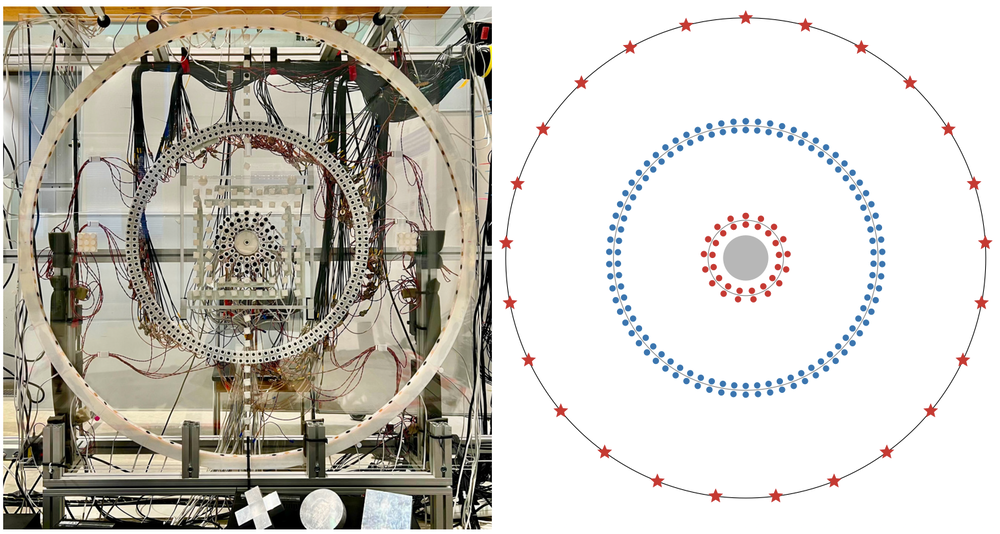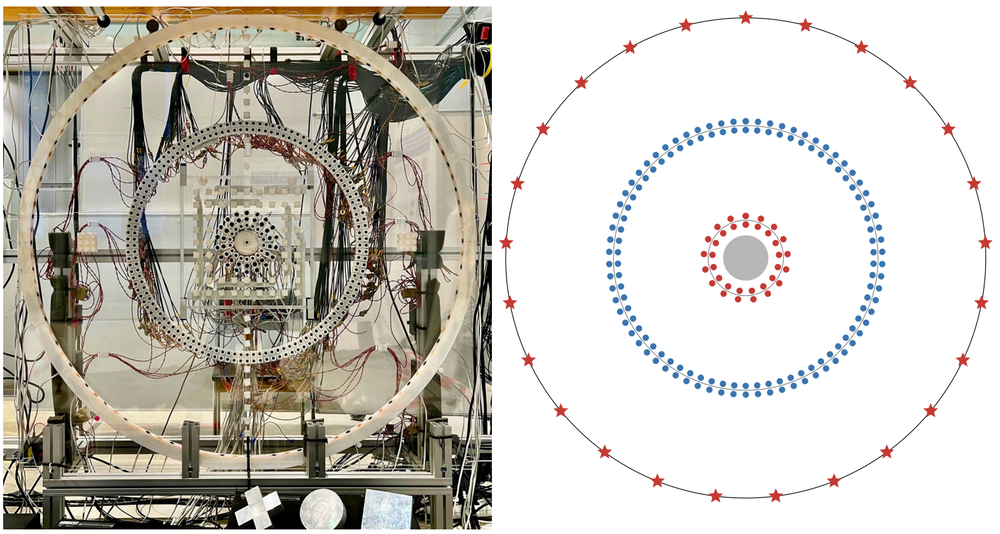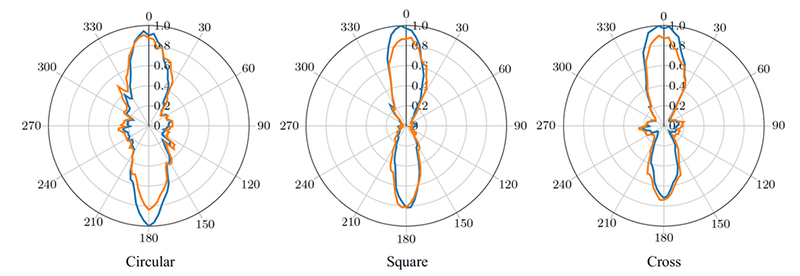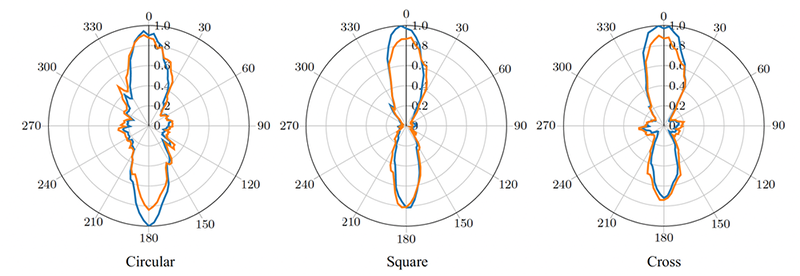Creating an Audio “Hallucination”
A hologram plate simulates the presence of a three-dimensional object by reflecting the appropriate light waves. Now researchers have demonstrated an equivalent behavior with sound by precisely mimicking the acoustic pattern scattered from an object [1]. The technique could be useful in military efforts to hide or disguise underwater objects, or it may be useful in modifying the reflected sounds of objects so that they are easier to identify by people with impaired vision.
The sound waves reflected from an object can be used to reconstruct its position and shape, an idea routinely exploited in sonar and ultrasound imaging. In principle, using similar concepts, a cleverly produced pattern of scattered waves streaming out of a small region could signify that an object is present when it is not. Several recent attempts to realize such “acoustic cloning” have been unsuccessful because of limitations in recording the precise pattern of waves an object reflects, a necessary preliminary step.
Now PhD student Jonas Müller and his colleagues from the Swiss Federal Institute of Technology (ETH) in Zurich have demonstrated a two-dimensional version of acoustic cloning. They built on the theoretical and computational techniques recently developed by their research group for recording the kind of acoustic information required to achieve full cloning [2, 3]. Among other things, this prior work established the need to carry out detailed measurements of scattered waves at many different frequencies and in an environment that allows waves to reflect many times between the object to be cloned and the environment’s reflective surfaces.
The researchers created a two-dimensional acoustic space between two parallel plastic sheets 2.5 cm apart. They placed an object of interest at the center of this space. A circular, soundproof boundary 66 cm from the center formed the outer edge of the space. A series of speakers located around the boundary allowed the researchers to “illuminate” the object with different patterns of sound waves. Two smaller concentric rings were used for either speakers or microphones, depending on the experiment.
To create the acoustic clone, the team first exposed the scattering object to a wide variety of sound waves and recorded the resulting wave fields in detail at all locations. Electronically, the team’s setup had the capacity to simultaneously record up to 800 distinct signals while generating another 800 output signals.
For cloning, the essential idea was to detect incident waves just before they arrived at the location where the object would have been and then to produce the reflected waves expected from that specific set of incoming waves. In testing their setup, the researchers used three different aluminum objects: a circle, a square, and a cross, each about 10 cm wide. In each case, they sent a 1-microsecond pulse of sound in from one direction. Such a short pulse naturally generates reflected waves over a broad range of frequencies, and the acoustic clone created a wave field that closely matched the reflected waves measured when the object was present. The researchers verified that the close agreement persisted for a wide variety of wave forms incident from any direction.
“Our work shows how to copy the full acoustic scattering of an object by simply listening,” Müller says. This acoustic cloning capability could have obvious military uses, such as hiding an object or simulating its presence, but Müller and colleagues are primarily interested in other applications. Once an acoustic clone is created, it is then easy to alter any of its characteristics—making reflected waves louder than they would normally be, for example. This amplification of the reflections could be useful for blind people who are training to use clicking sounds to locate objects around them, Müller says.
“These groundbreaking experiments show that real-time acoustic holography is possible in practice, even for objects that have entirely unknown acoustic properties,” says geophysicist Andrew Curtis of the University of Edinburgh in the UK. “This has been a long-term goal of acoustics research.”
–Mark Buchanan
Mark Buchanan is a freelance science writer who splits his time between Abergavenny, UK, and Notre Dame de Courson, France.
References
- J. Müller et al., “Acoustic cloning,” Phys. Rev. Applied 20, 064014 (2023).
- X. Li et al., “Closed-aperture unbounded acoustics experimentation using multidimensional deconvolution,” J. Acoust. Soc. Am. 149, 1813 (2021).
- T. S. Becker et al., “Broadband acoustic invisibility and illusions,” Sci. Adv. 7 (2021).







